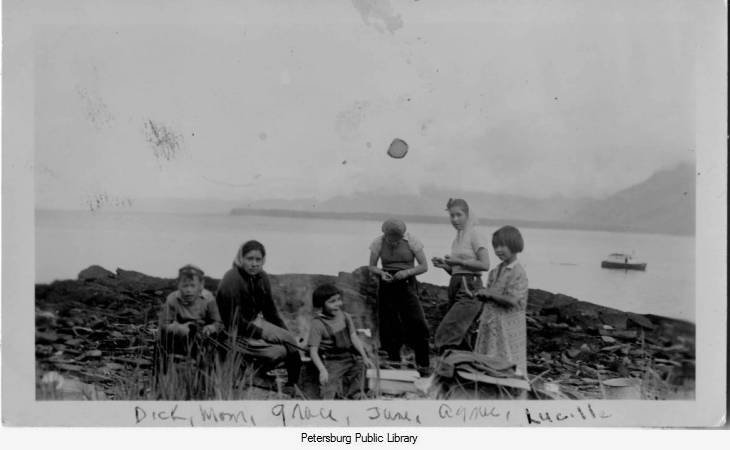
Séet Ká (Petersburg)
Photo courtesy of the Alaska State Library.
While the small town of Petersburg is presently known for its Norwegian heritage and founder Peter Buschmann, the northernmost point of Mitkof Island was already long occupied by the Tlingit people.
An active Alaska Native Brotherhood and Sisterhood was part of the requirements needed to be considered for ANCSA inclusion. Amy Hallingstad served as Grand President of ANS Camp 16 during the late 1940s.
Before Séet Ká became a bustling commercial fishing and seafood processing port, it was established as a Tlingit fish camp by those who had migrated from Kake to reside around the island, establishing trolling camps where the Wrangell Narrows meets the Frederick Sound.
The Native villages in Séet Ká were located at the mouth of Petersburg Creek and across the sound in Thomas Bay. Sasby Island near Petersburg was the traditional burial ground for Séet Ká Alaska Natives, with gravesites dating back to 1911.
Joining the fight for recognition and aboriginal land claims in the early 1920s, the local Alaska Native Brotherhood and Sisterhood in Petersburg became a leading force in compelling the federal government to consider Indigenous land claims, sending delegates to the 1929 Grand Camp Convention in Haines and further joining forces for the first Alaska Native land claims lawsuit in 1929.
Amy Hallingstad ― an Alaska Native civil rights activist and renowned leader in the Alaska Native Sisterhood ― was Tlingit of the Tsaagweidí (Eagle/Killerwhale Clan), and dedicated her life to desegregating her community of Petersburg and championing the land rights and human rights of all Alaska Natives. Serving in various leadership roles within the Petersburg ANS Camp 16, she served as Grand President from 1947–1949 and 1953–1956. Remaining in Petersburg her whole life, Hallingstad is known as an Alaska civil rights pioneer alongside Elizabeth Peratrovich.
To this day, Petersburg remains a place many Alaska Natives call home. While the fight remains for landless communities to create urban corporations, Native institutions like the Petersburg Indian Association, a federally recognized tribe, have worked to fill the gap, promoting culture and community through traditional values, education and tribal wellness. A Native land settlement will make this Native community whole.

“One thing that all Alaska Natives agree on is that there’s a certain type of medicine that comes with being in contact with your homeland. It’s good for your spirit, it’s good for your body, and it’s good for your mind. Having our homelands restored would make me and my community feel whole.”



